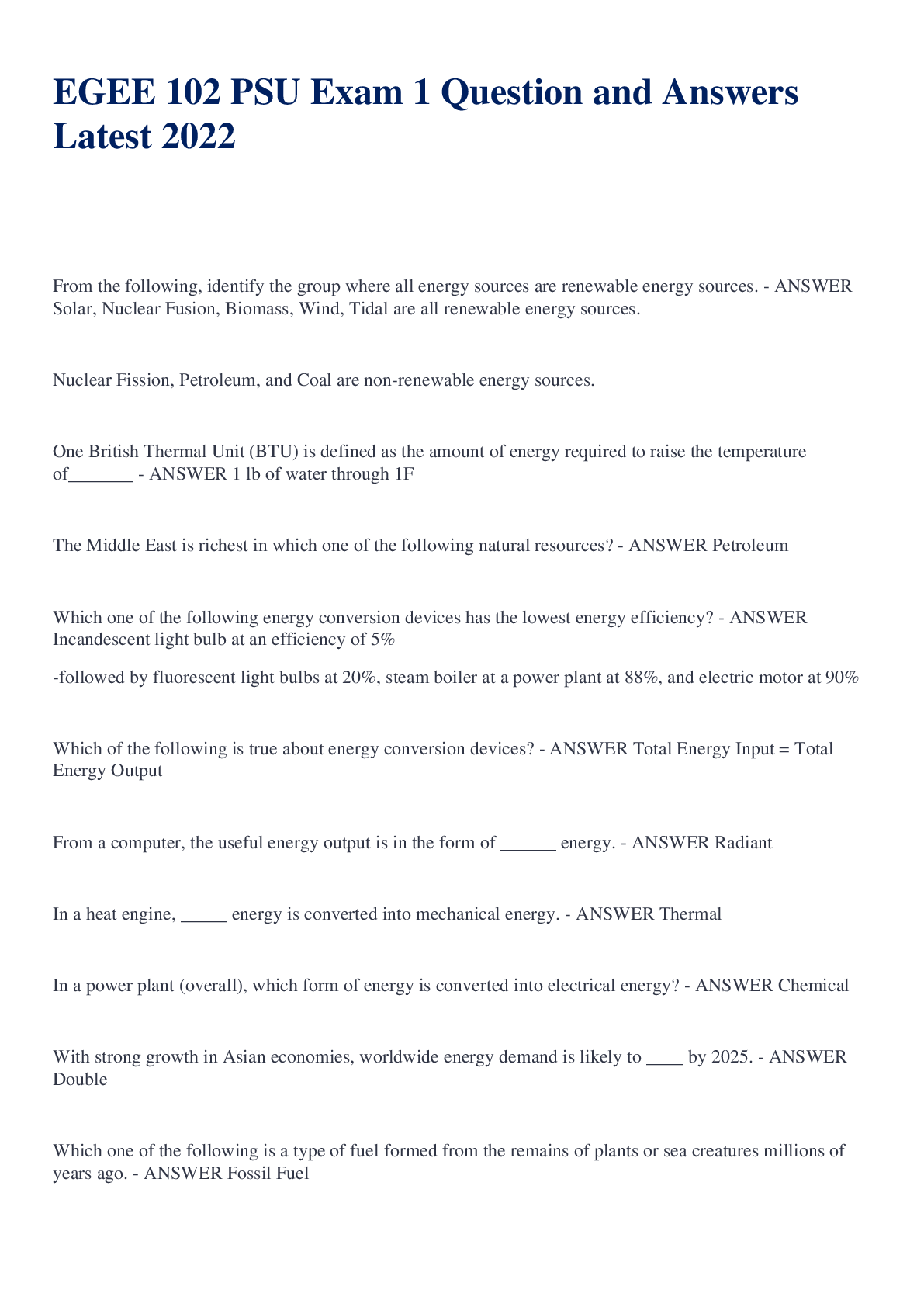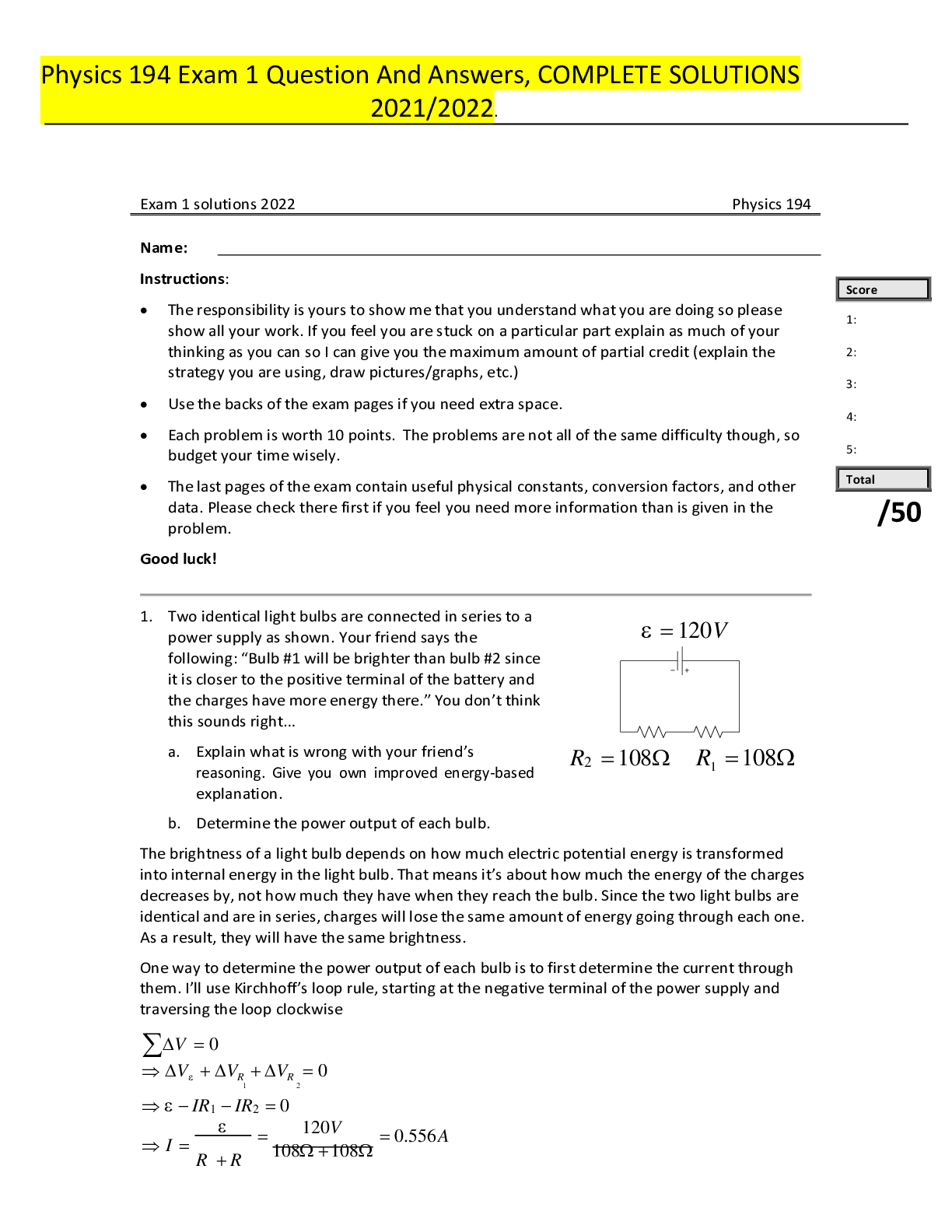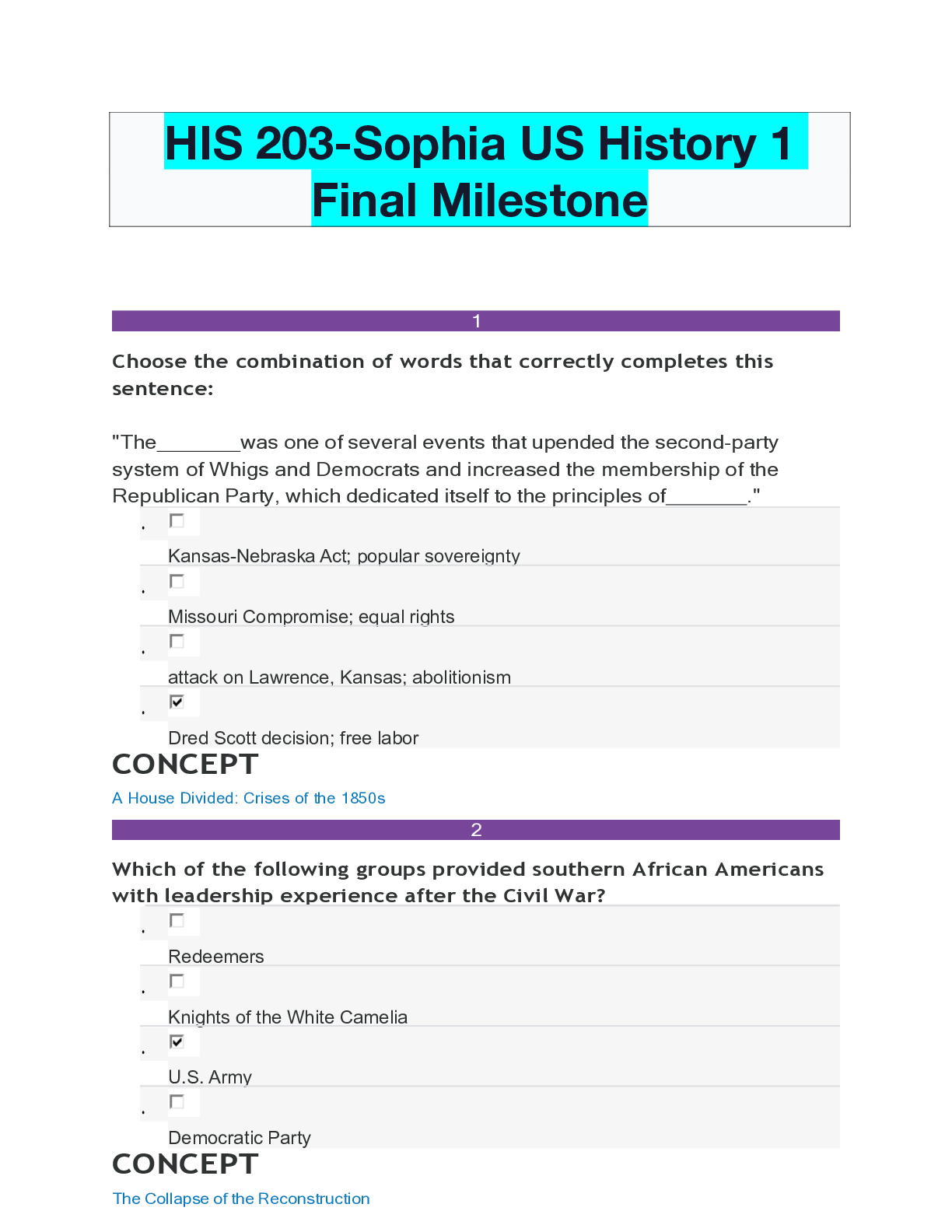History > EXAM > Strayer University - HIST 105 US History 1 Unit 1 Challenge 1 QUESTION AND ANSWERS. (All)
Strayer University - HIST 105 US History 1 Unit 1 Challenge 1 QUESTION AND ANSWERS.
Document Content and Description Below
US History 1 Unit 1 Challenge 1 HIST 105 US History 1 Unit 1 Challenge 1-3 Which of the following statements is true? a.) The writing of history is influenced by the cultural environment in wh... ich it is written. b.) Historical interpretations of past events rarely change over time. c.) History is best determined through the lenses of politics and economics. d.) Historians have a responsibility to merge their own experiences into historical narratives. Consider the following research question and choose the primary source that is best suited to answer it. "What were the long-term consequences of Japanese internment camps in the United States during World War II?" a.) A high school history textbook published in 1990 b.) A documentary about World War II produced by a historian c.) A national newscast from 1942 d.) An interview in 2001 with a Japanese American who was confined to a camp As part of her research on the American Revolution, Bea reads a book about forms of public protest in the 18th century colonies. Which of the following is most likely a lens she is exploring? a.) Politics b.) Race c.) Economics d.) Ethics Which native civilization lived in permanent settlements made up of apartment-like complexes of stone and mud? a.) The Hopewell b.) The Pueblo c.) The Olmec d.) The Aztec Which of the following historians is collecting oral history? a.) Hector analyzes one of the first maps made by European explorers. b.) Hope attempts to translate symbols on a pot that she believes were a form of writing. c.) Hajit makes detailed drawings of prehistoric images found on boulders in Minnesota. d.) Helen interviews contemporary Native Americans about their cultural traditions. Which of the following motives played the biggest role in the European discovery of the New World? a.) Proving the earth to be round b.) Spreading Christianity to indigenous populations c.) Seeking new trade routes with Asia d.) Looking for previously undiscovered lands Which of the following events led to increased maritime exploration in the 15th century? a.) The invention of the printing press b.) Discoveries by the Vikings c.) Competition between Catholics and Protestants d.) The Crusades of the 11th, 12th and 13th centuries After the New World was discovered, major European empires like the Spanish, English, French and Portuguese competed for control of the new lands, despite the presence of indigenous peoples. Which of the following concepts does this statement best exemplify? a.) Globalization b.) Commodification c.) Colonization Which of the following elements was characteristic of slavery in West Africa prior to the Atlantic Slave Trade? a.) Slaves often became parts of households. b.) Slavery was often a life sentence. c.) Africans were targeted by Asian traders. d.) Chattel slavery was common. In 1540, Francisco Vásquez de Coronado set out to find the rumored golden city of Quivira. What came of his expedition? a.) Quivira was found in modern-day Oklahoma, but its wealth had been greatly exaggerated in the rumors. b.) Despite a two-year expedition that got as far north as modern-day Kansas, Coronado never found Quivira. c.) Quivira was discovered near present-day Albuquerque, stripped of its wealth and ultimately abandoned. d.) Coronado's expedition ended prematurely after a particularly brutal winter in the Rocky Mountains. What was a significant factor in the demise of Dutch settlements in the Americas? a.) Too few European settlers b.) Internal struggles back in Holland c.) Territorial disputes with France d.) Conflict with native peoples As the colonial reach of European nations expanded, Native Americans found it harder to hunt and move freely, as they had previously done. Which of the following factors played the biggest role in that change? a.) Europeans passed laws that restricted Native Americans to small reservations, often far away from their traditional hunting grounds. b.) Europeans claimed private ownership of large tracts of land, which they enclosed with fences and walls. c.) Europeans introduced economic ideas about city-living that were highly influential among Native Americans. d.) Europeans supplied advanced weaponry to Native Americans, which aggravated existing inter-tribal conflicts and made them afraid to encounter enemy tribes. Interactions between Native Americans and Europeans led to the commercialization of traditional beaver-hunting practices. Which of the following factors played the biggest role in that change? a.) Europeans brought new animals that made it easier to hunt for beavers. b.) Europeans were willing to give Native Americans muskets in exchange for beaver pelts. c.) Europeans introduced the concept of private ownership of hunting lands. d.) Europeans introduced capitalism and ideas about success through hard work. Which of the following statements is characteristic of Martin Luther's position in 1517? a.) "I declare myself to be the head of the Catholic Church in my country." b.) "Reading scripture prepares people to receive God's grace if they are among the elect." c.) "The practice of selling indulgences is corrupt and has to stop." d.) "Individual monarchs have too much power." What role did European exports play in the Triangular Trade? a.) Slaves would be brought from Europe to the Americas in exchange for textiles, rum and other goods. b.) Manufactured goods were used to buy African slaves from other Africans who captured them. c.) Guns and gunpowder from Europe were exchanged for sugar in Africa. d.) Rum was used to lure Africans into the voyage to America, where they would then be forced into slavery. Which statement is most representative of the French approach toward native peoples in the Americas? a.) "The natives, although poor, show ingenuity and will welcome friendship with a superior civilization." b.) "The natives will submit to the absolute authority of the Crown." c.) "Gift exchanges with natives will forge alliances and establish trade relationships." d.) "Your territory belongs to us by decree of the Catholic Church." Consider the excerpt from Robert Johnson's "Nova Britannia" and the possible bias it represents. "Unlike other colonists, these men and women were motivated by religion and a desire to create a successful community." Which English colony is most likely being described here? a.) Massachusetts Bay b.) Jamestown c.) Virginia d.) Roanoke Which factor led to the implementation of the Headright System? a.) The desire to equalize opportunity for Englishmen b.) Landowners abusing the system of indentured servitude c.) Abundant land and the desire to attract more migrants d.) The racialization of slavery in the New World Which factor led to the creation of a maritime-based economy in the northern colonies? a.) Agricultural surpluses that could be sold in foreign markets b.) Need for slave labor in the northern colonies c.) Religious intolerance in the northern colonies d.) Settlers with diverse backgrounds and tastes in the northern colonies Which of the following societal changes occurred when New Netherlands became New York? a.) Slavery, which had been condemned by the Dutch, was introduced. b.) A system of patronage was implemented to distribute land. c.) Married women could no longer use their own name to do business. d.) Colonists of Dutch descent were forcibly exiled back to Europe. Which of the following was a source of tension between English colonists and Native Americans? a.) Colonists were envious of Native Americans' agricultural know-how. b.) Colonists viewed Native Americans as weak and easily conquerable. c.) The growing population in the colonies led to colonists claiming more territory. d.) Native Americans took pity on the colonists for their lack of preparedness. Which of the following statements most likely identifies Johnson's purpose in writing? a.) Johnson's purpose was to provide an accurate description of Jamestown for future historians to study. b.) Johnson's purpose was to give investors a carefully constructed idea of how the Virginia Company operated internally. c.) Johnson's purpose was to instruct settlers on how to thrive in Virginia and profit from its resources. d.) Johnson's purpose was to attract people to invest in the Virginia Company and settle in Jamestown. [Show More]
Last updated: 1 year ago
Preview 1 out of 9 pages
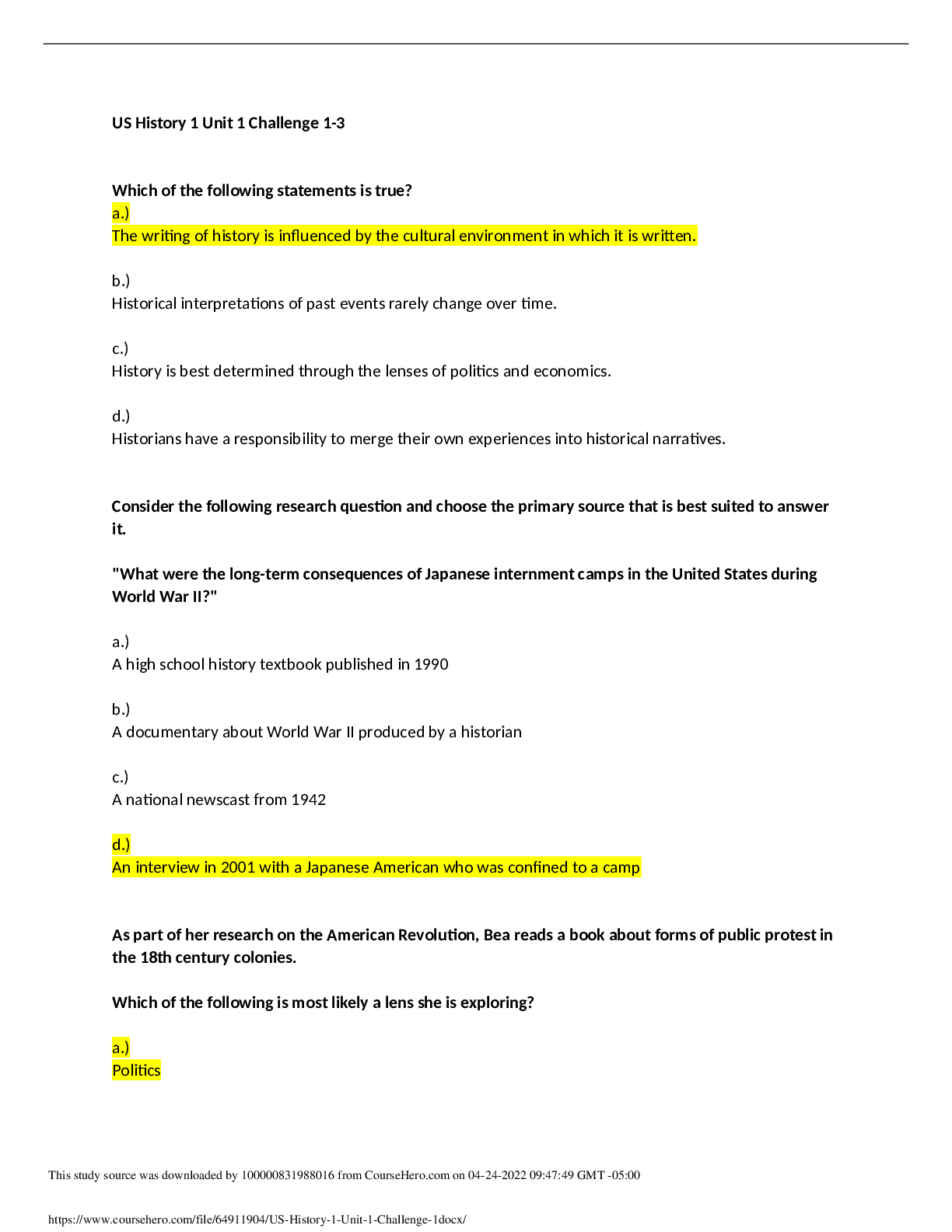
Reviews( 0 )
Document information
Connected school, study & course
About the document
Uploaded On
Sep 26, 2020
Number of pages
9
Written in
Additional information
This document has been written for:
Uploaded
Sep 26, 2020
Downloads
0
Views
46

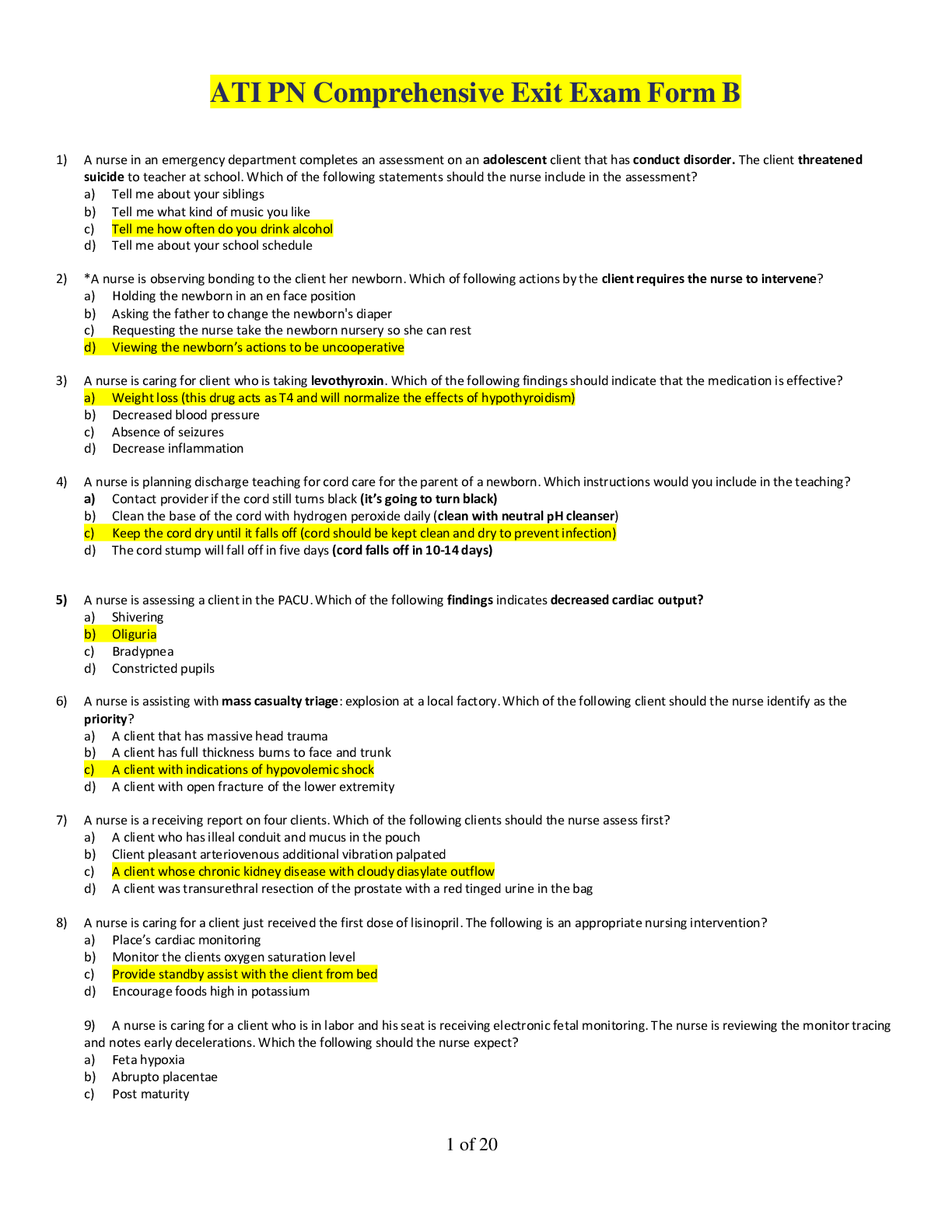
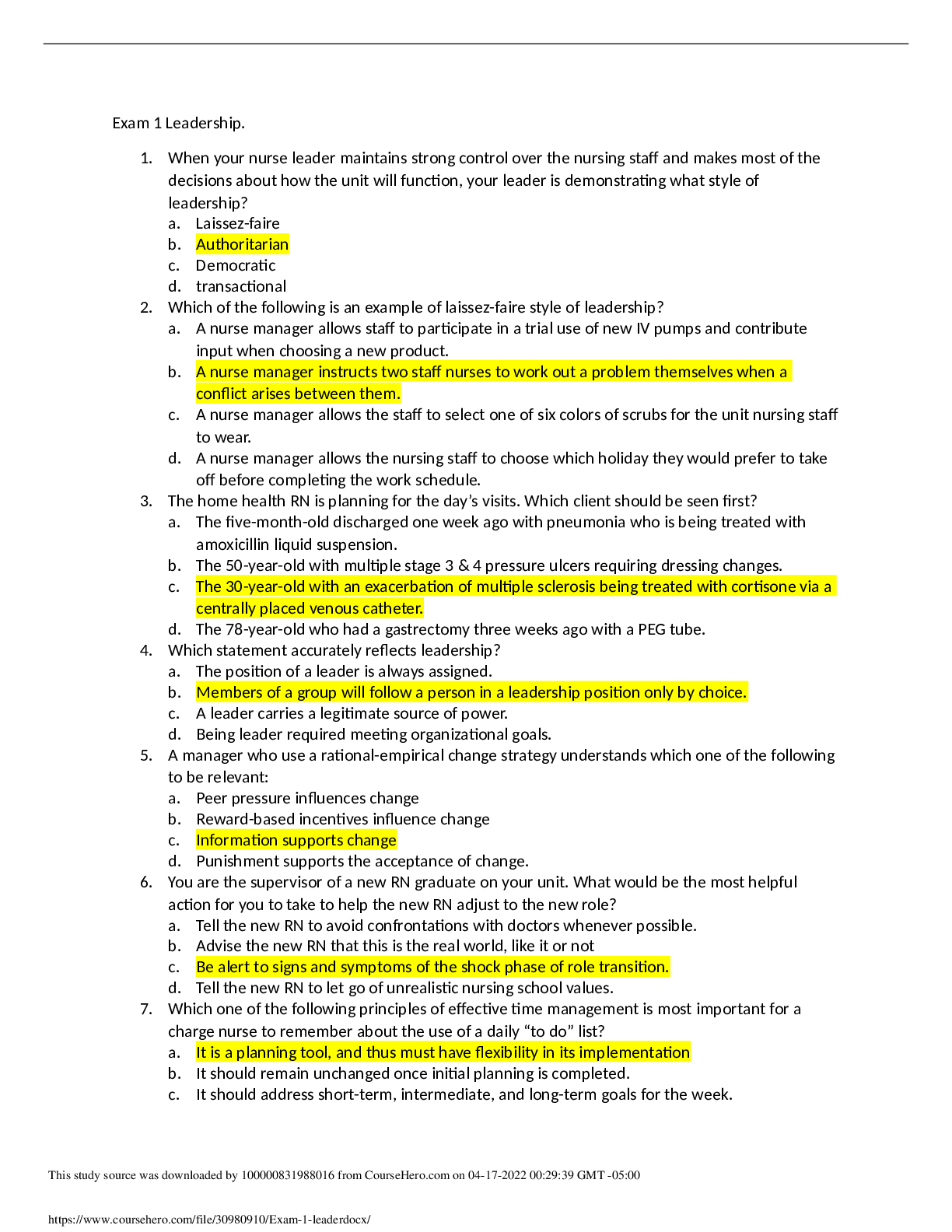
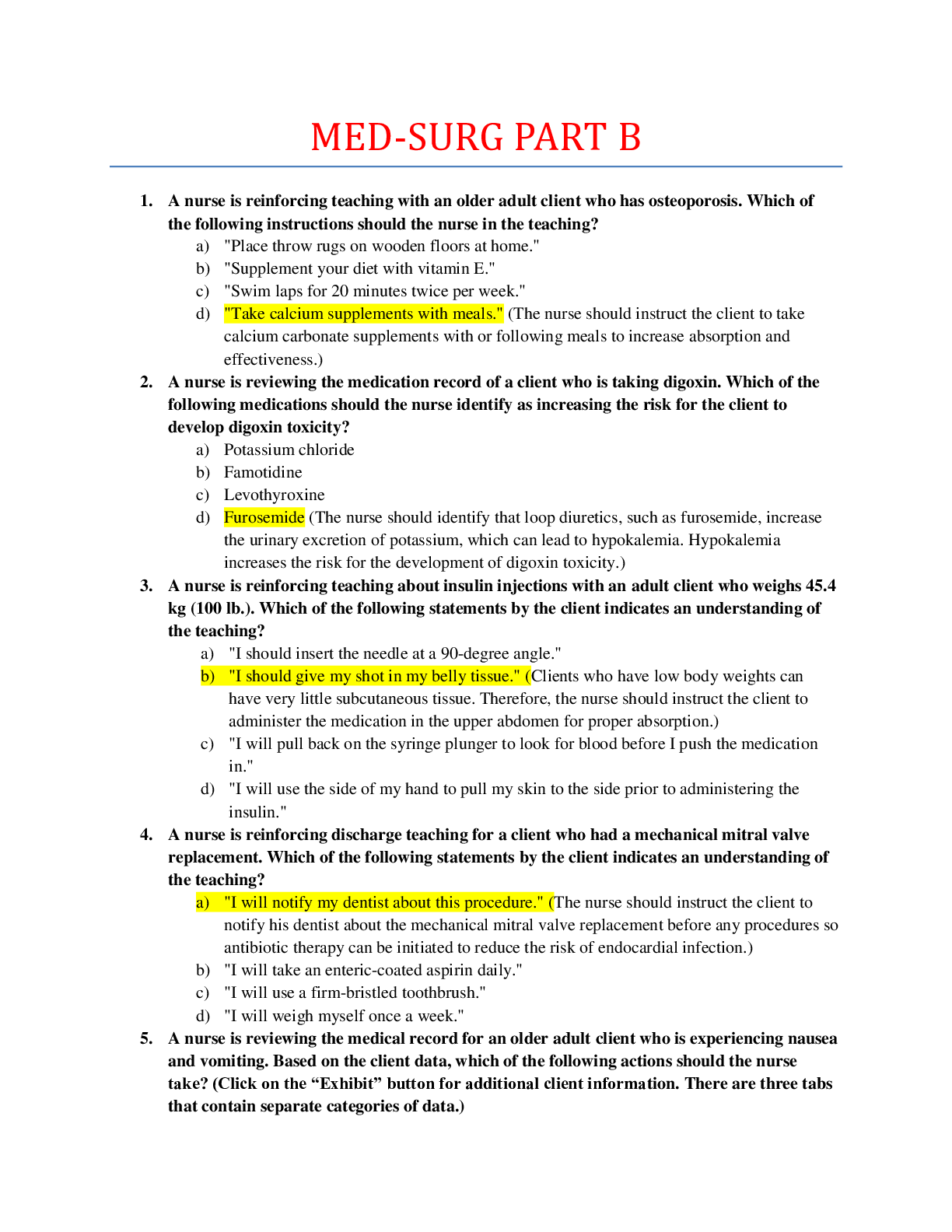
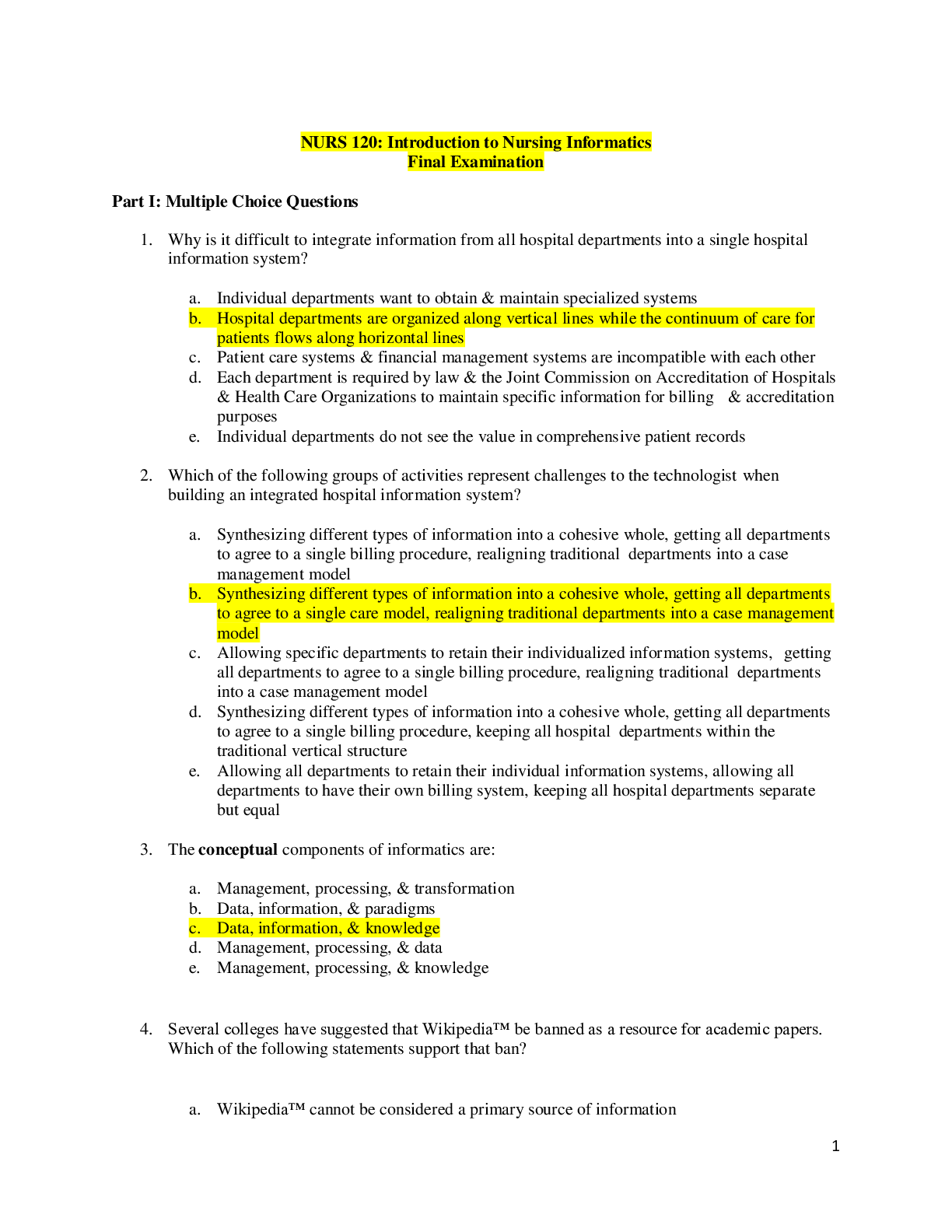
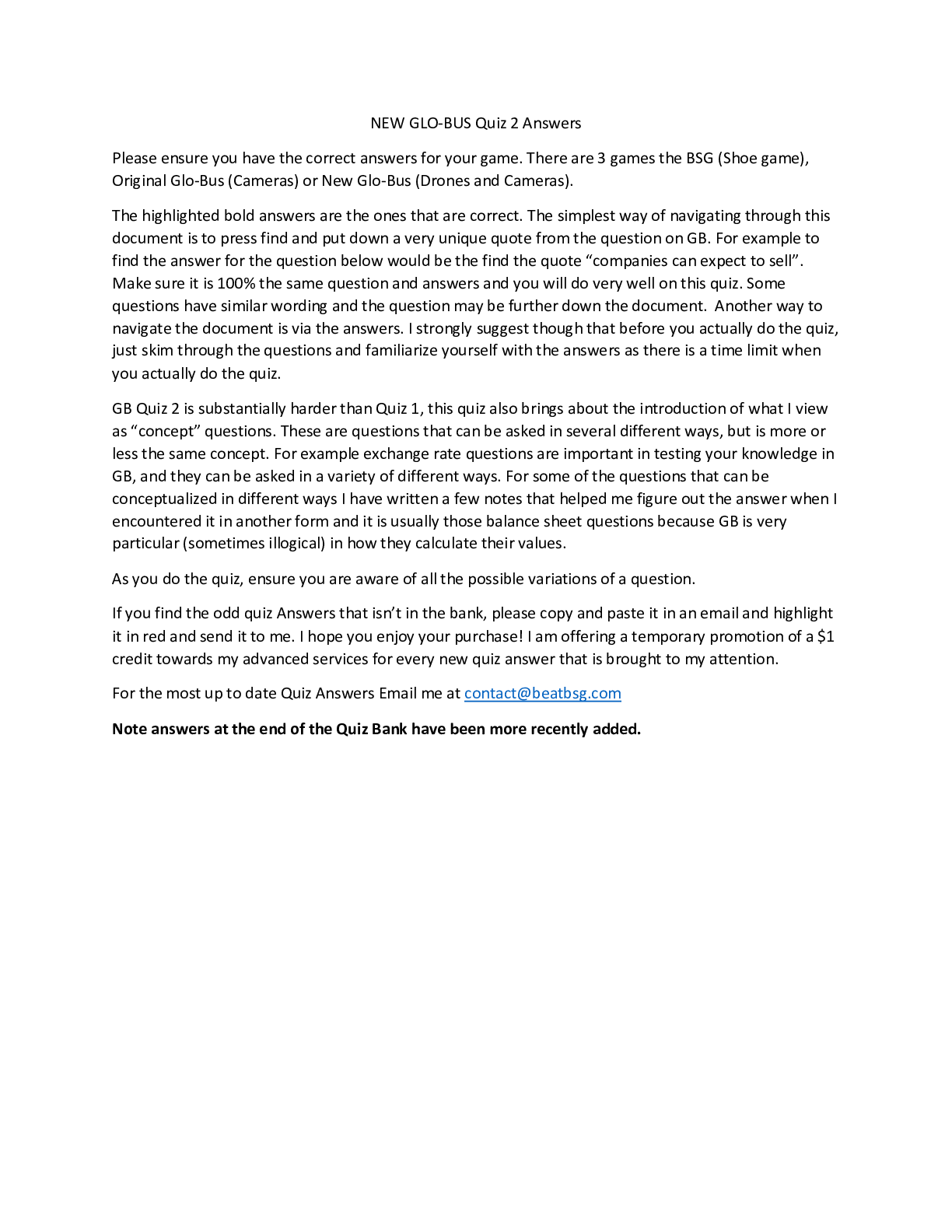
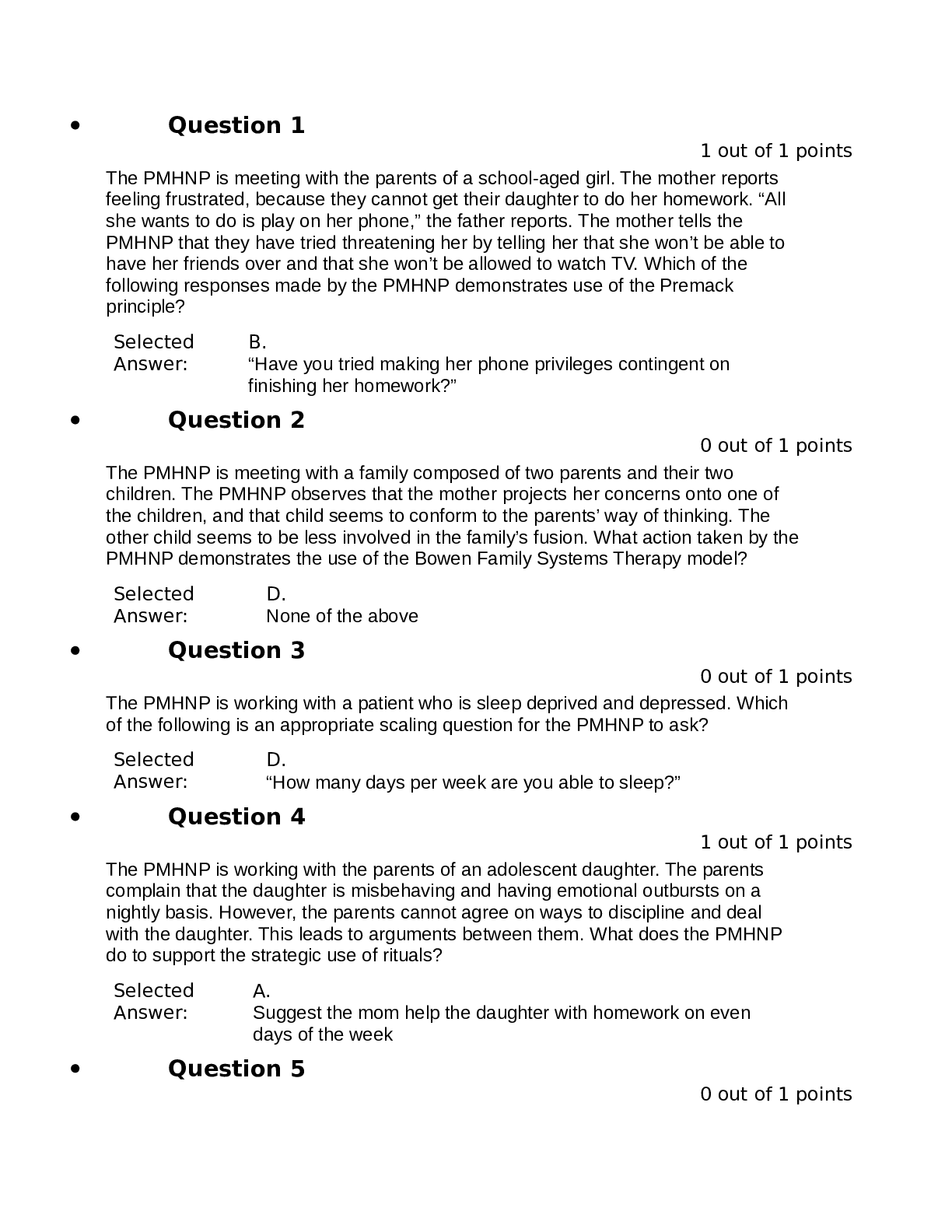
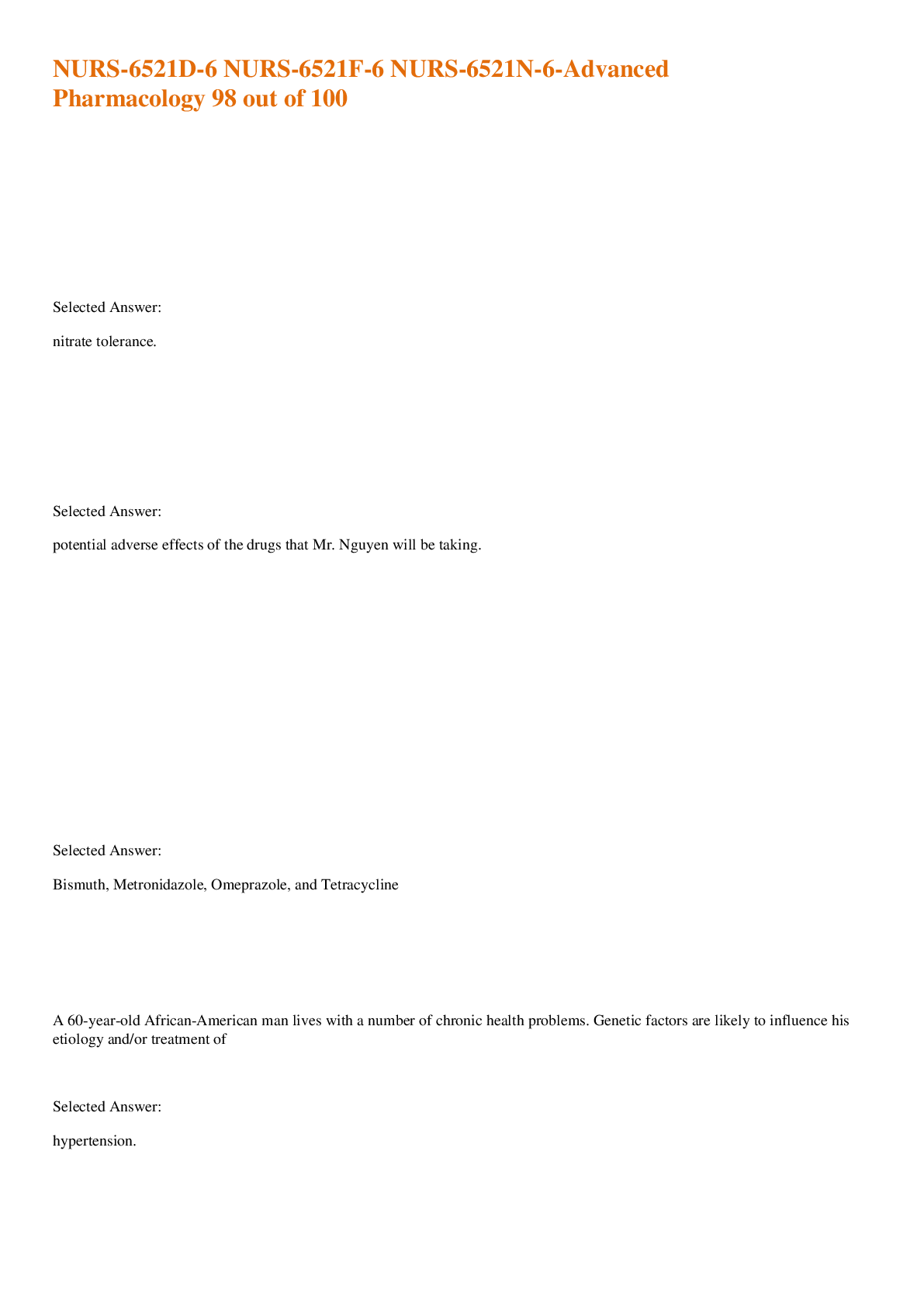
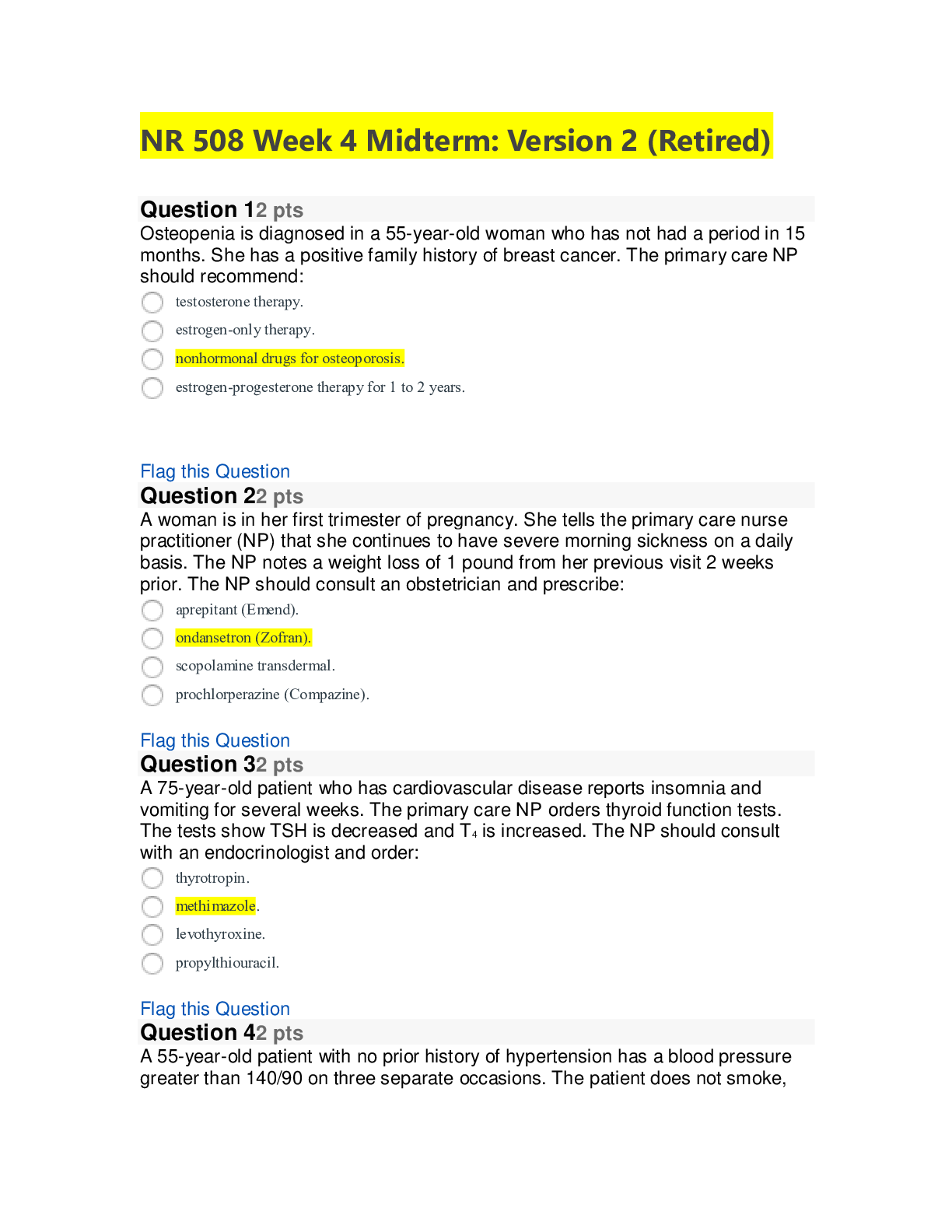
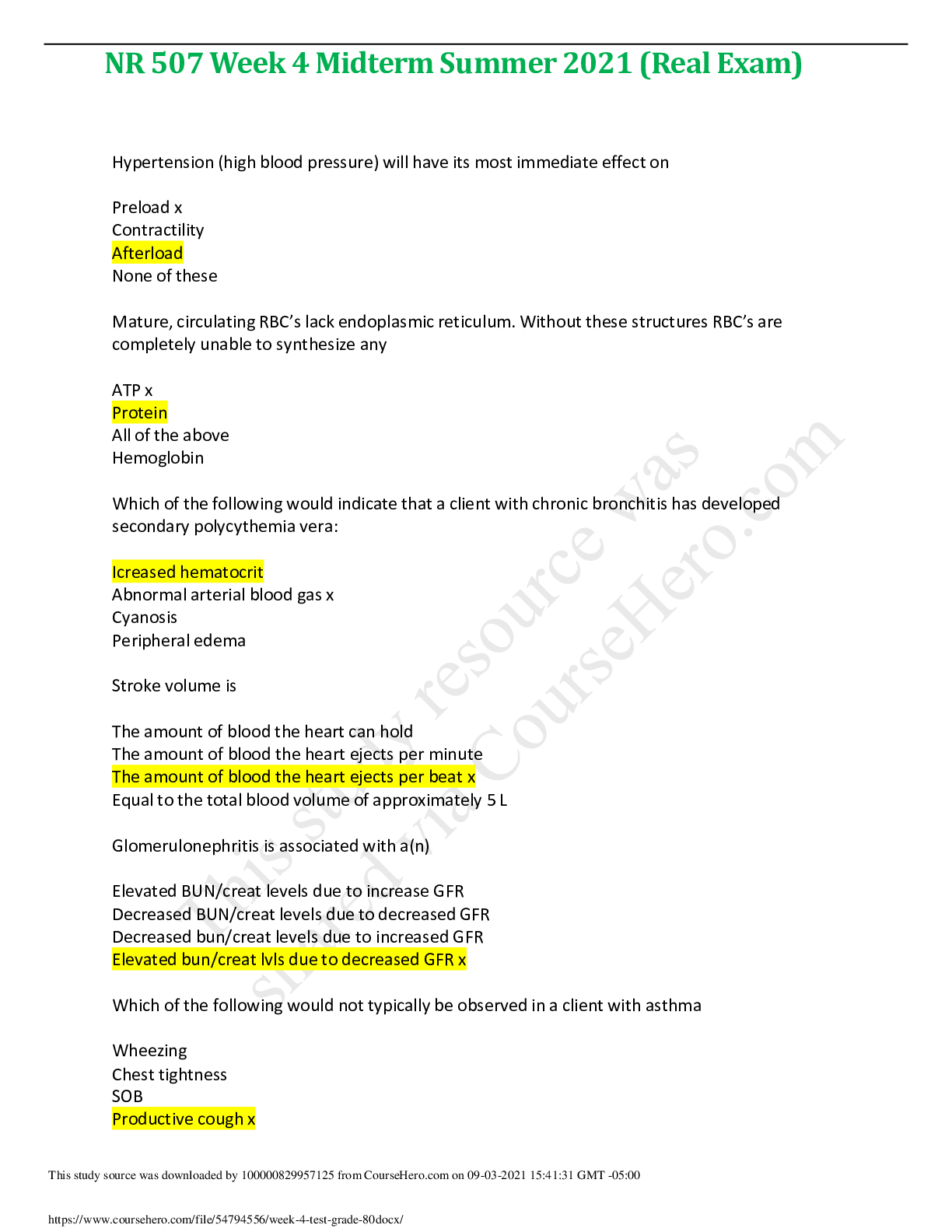
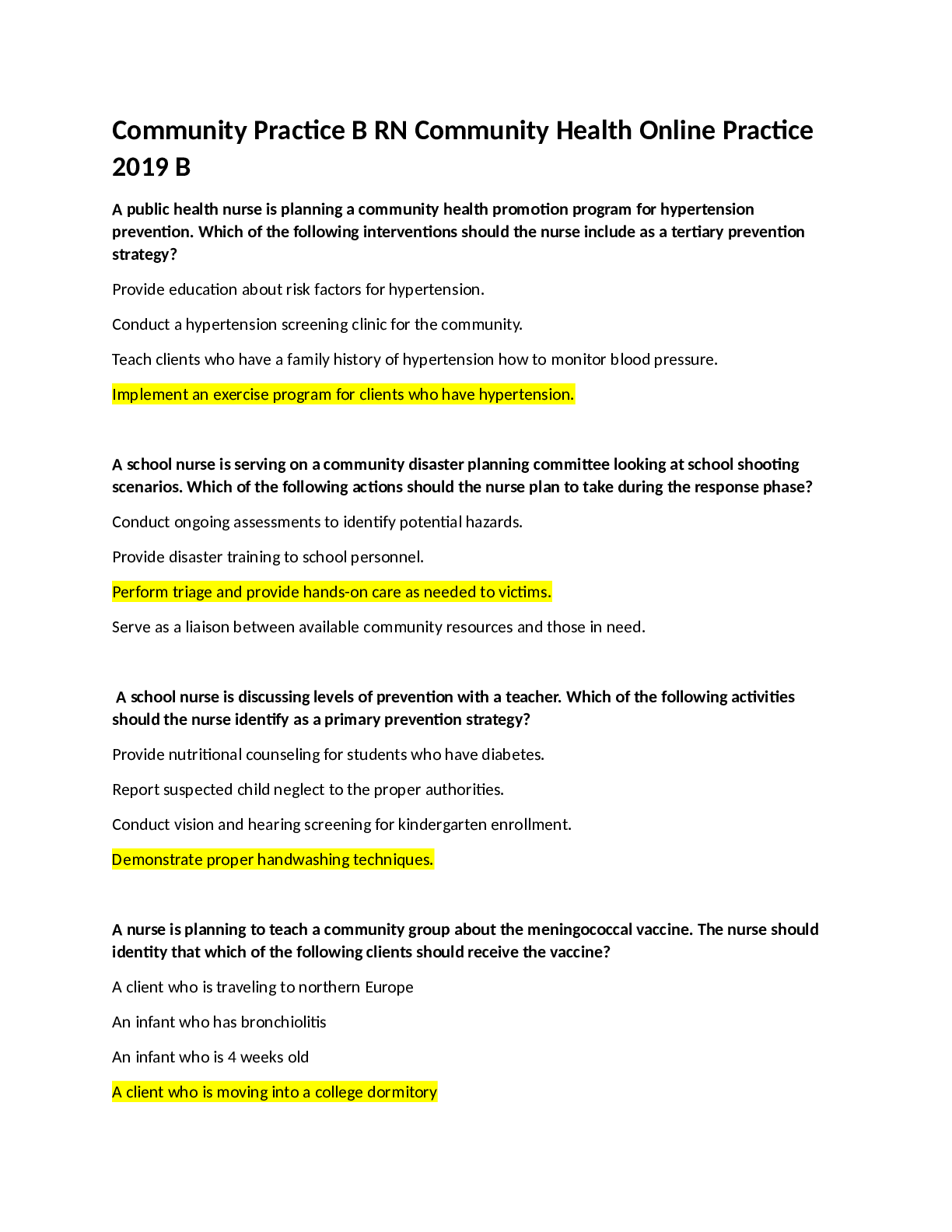
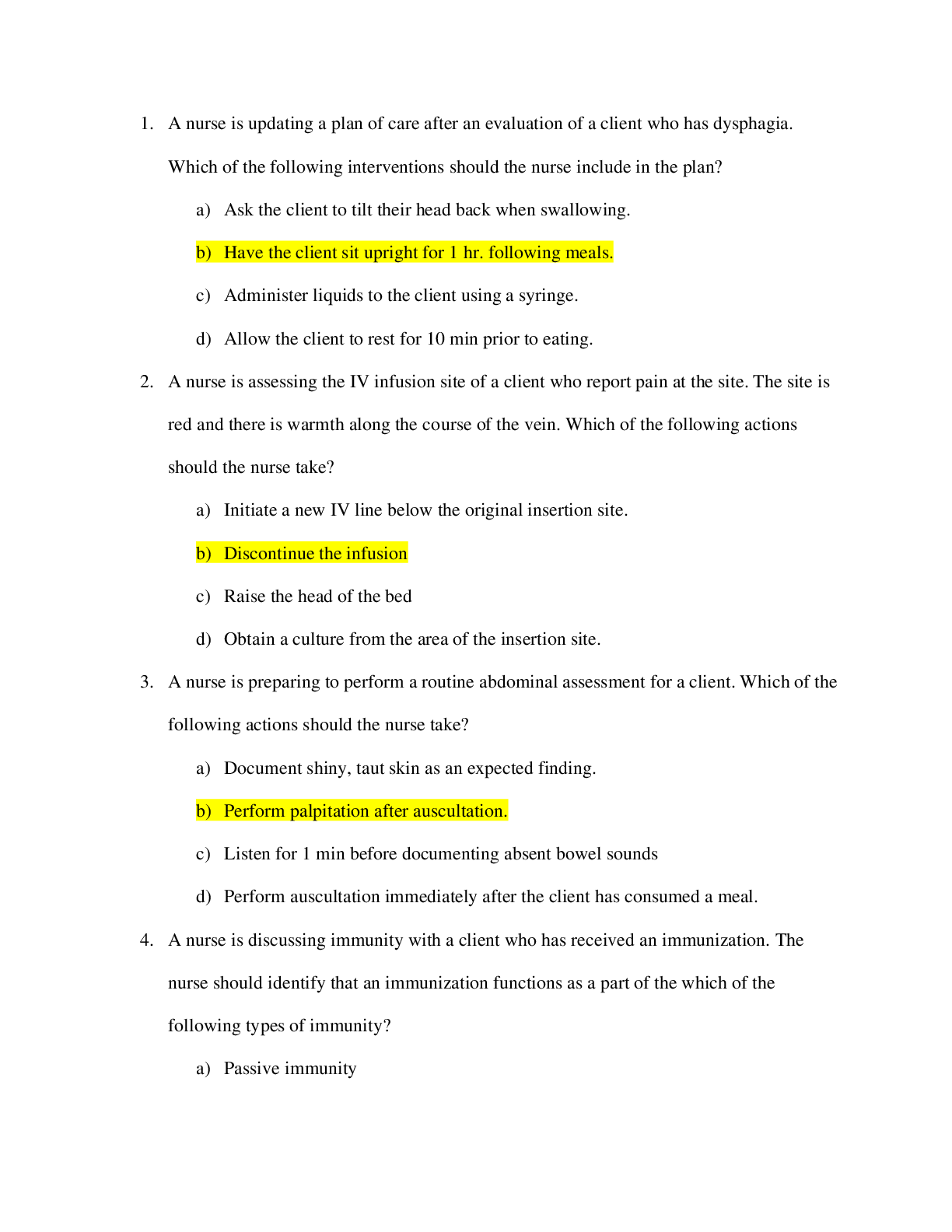
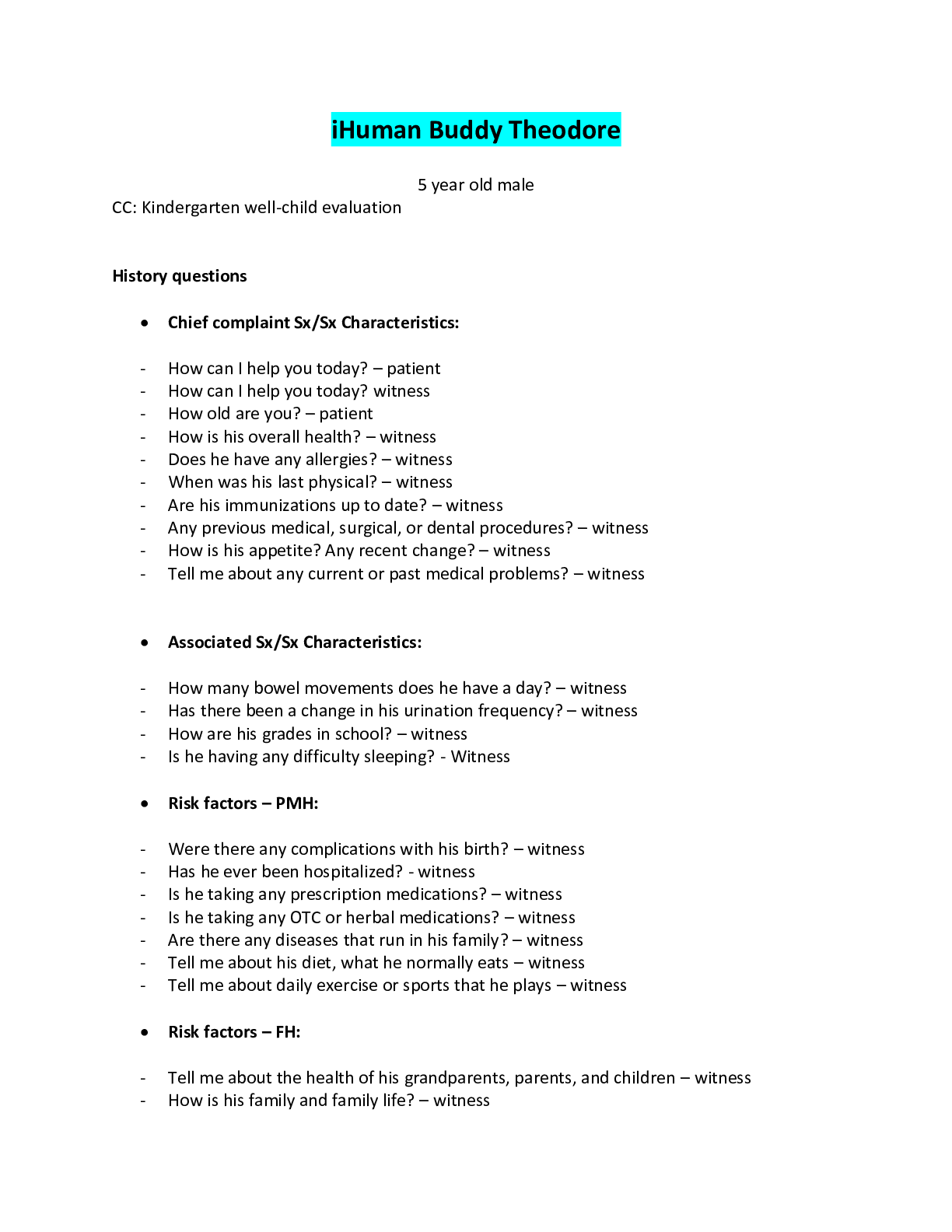
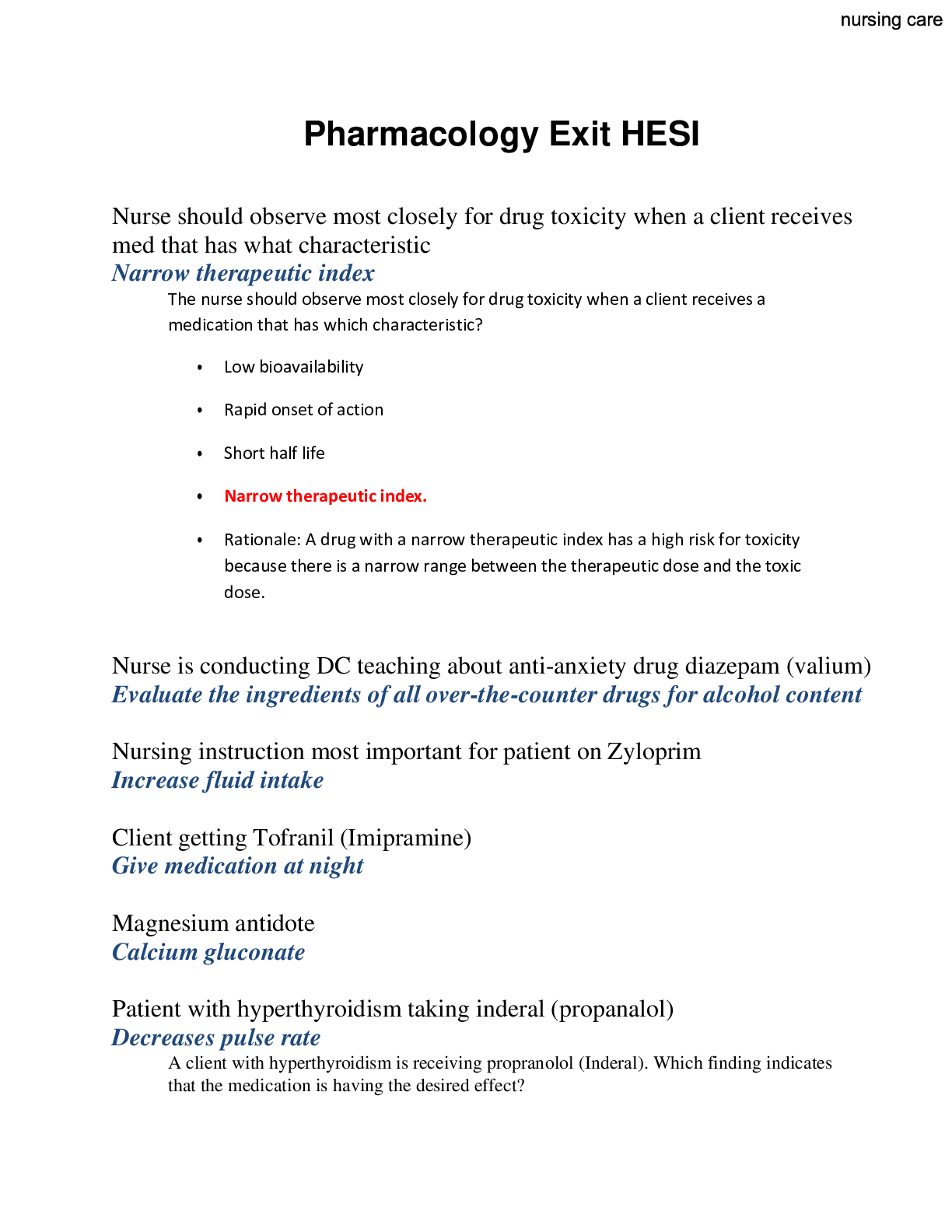
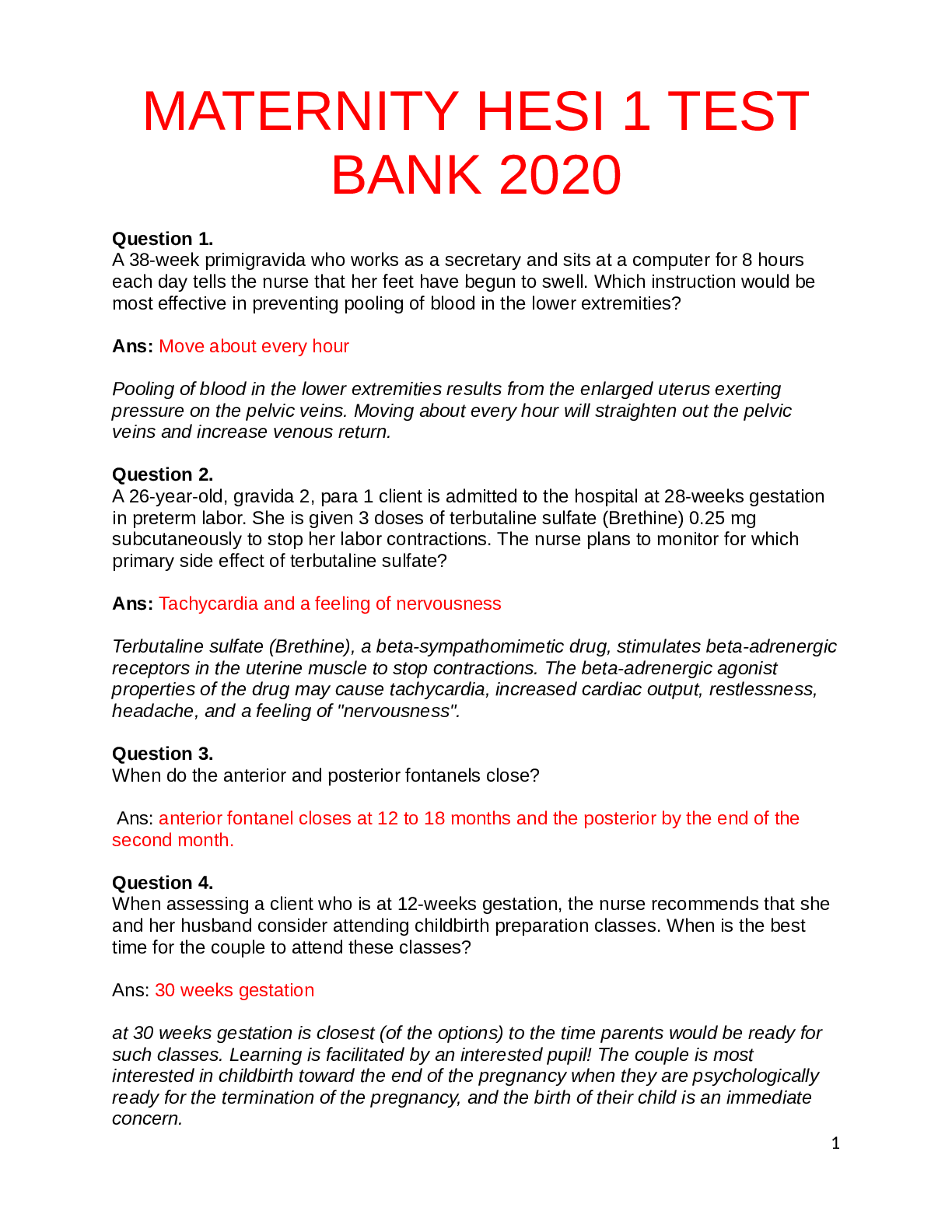
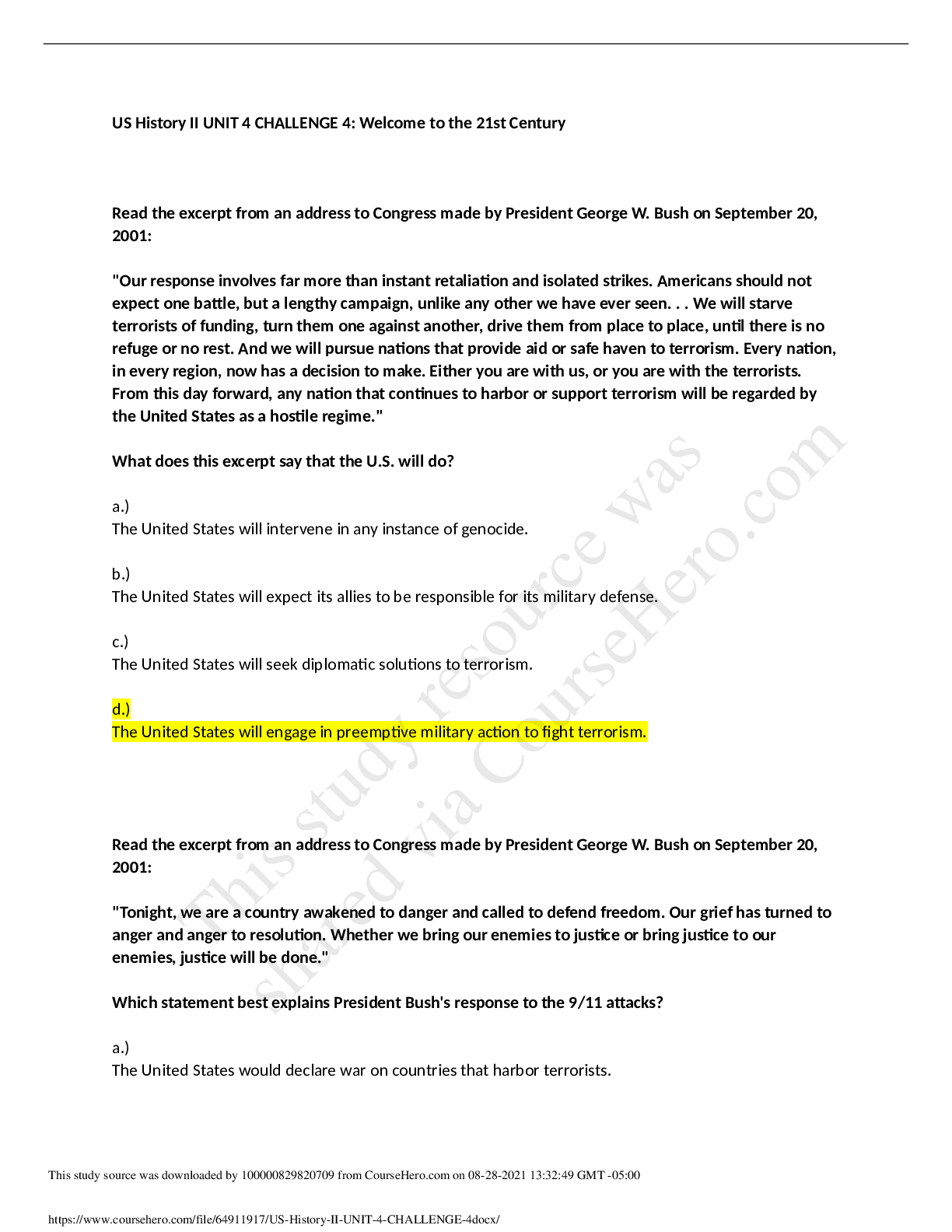
.png)
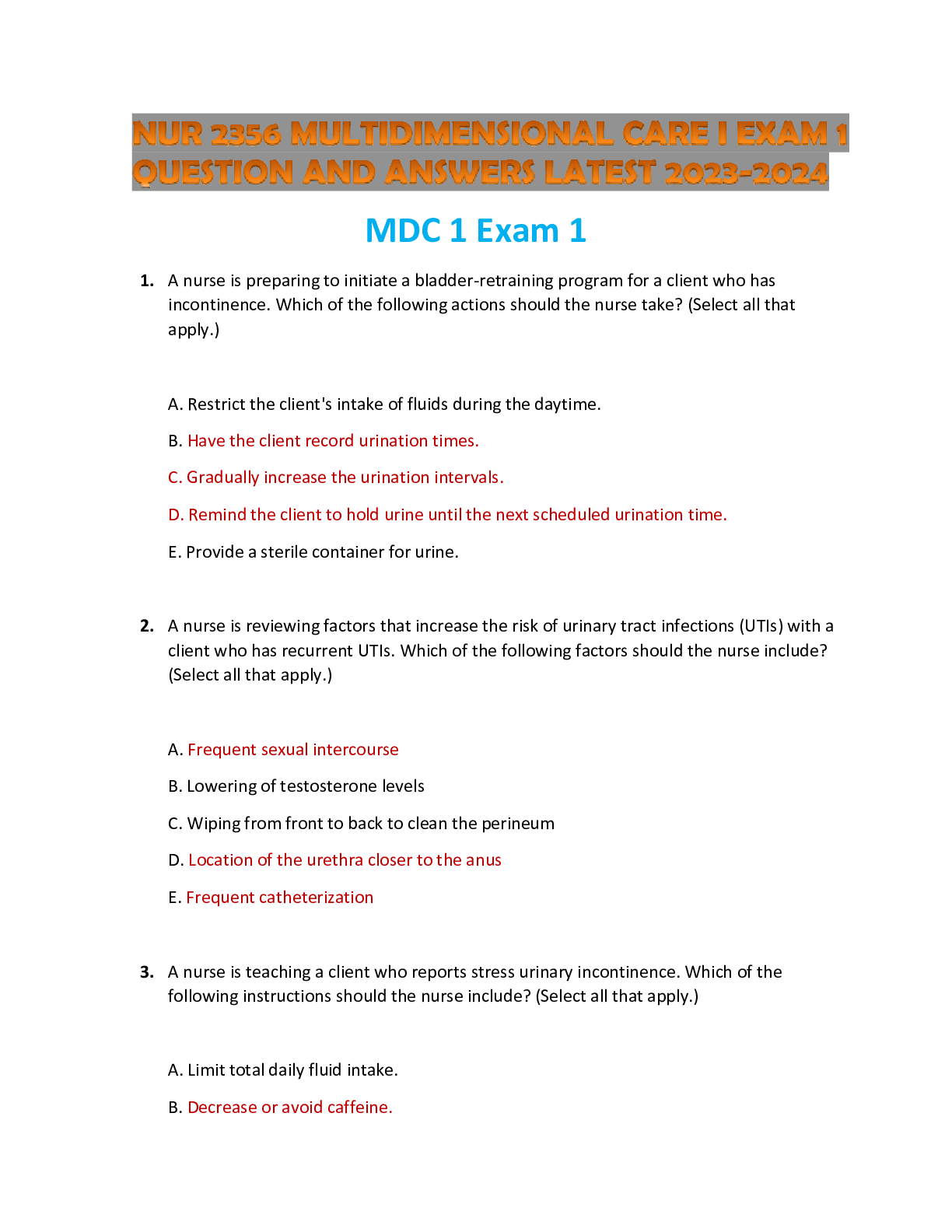



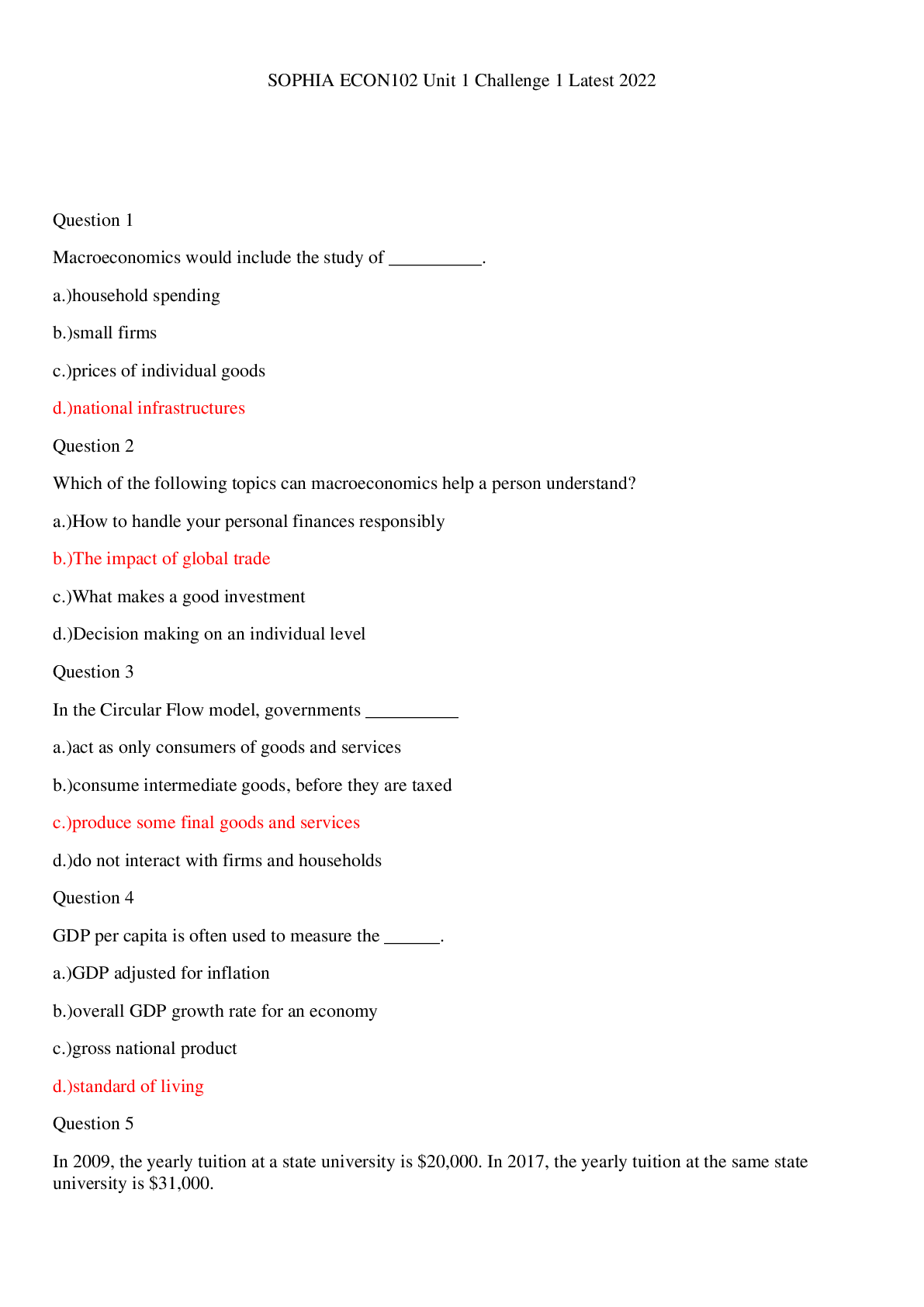

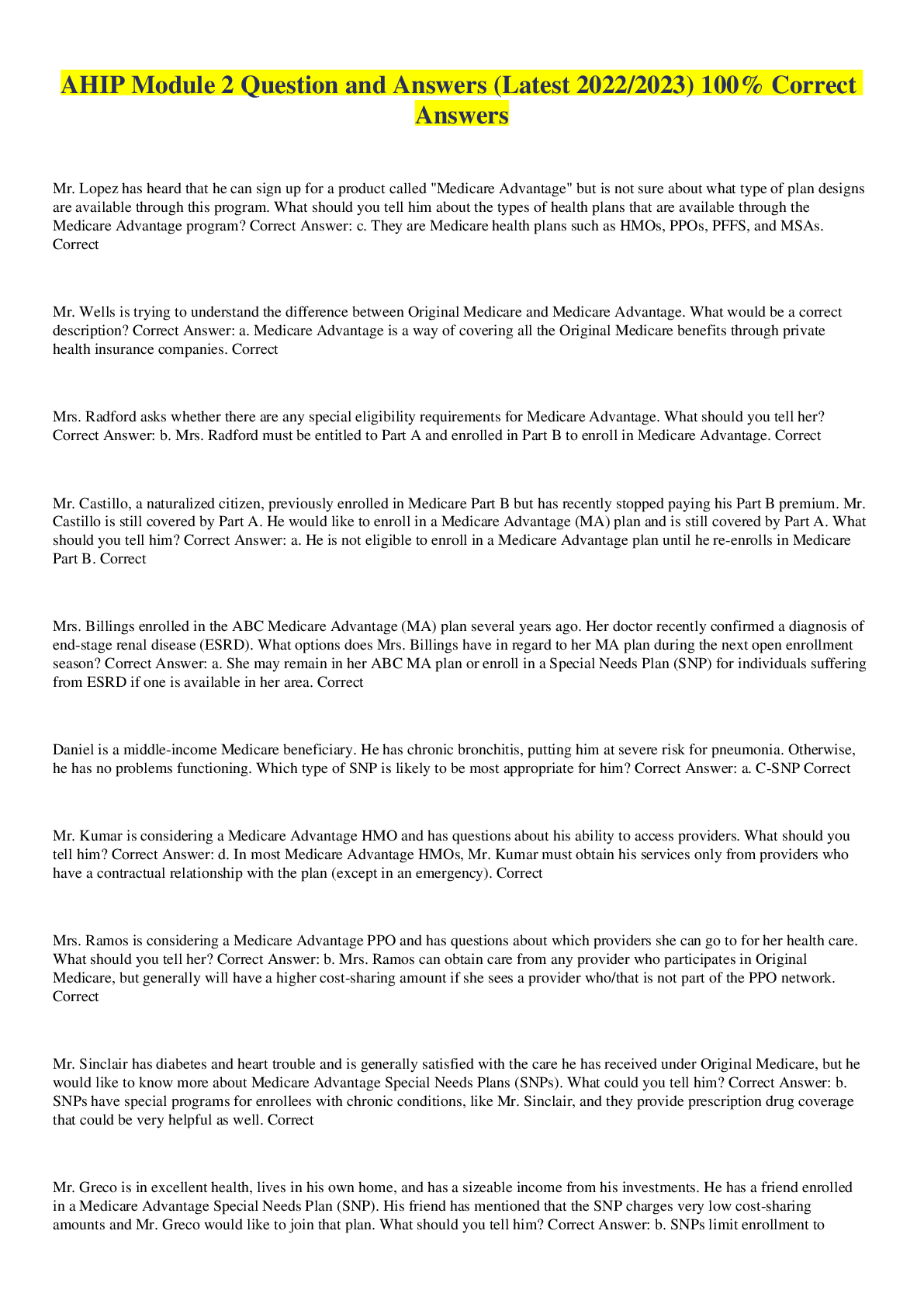
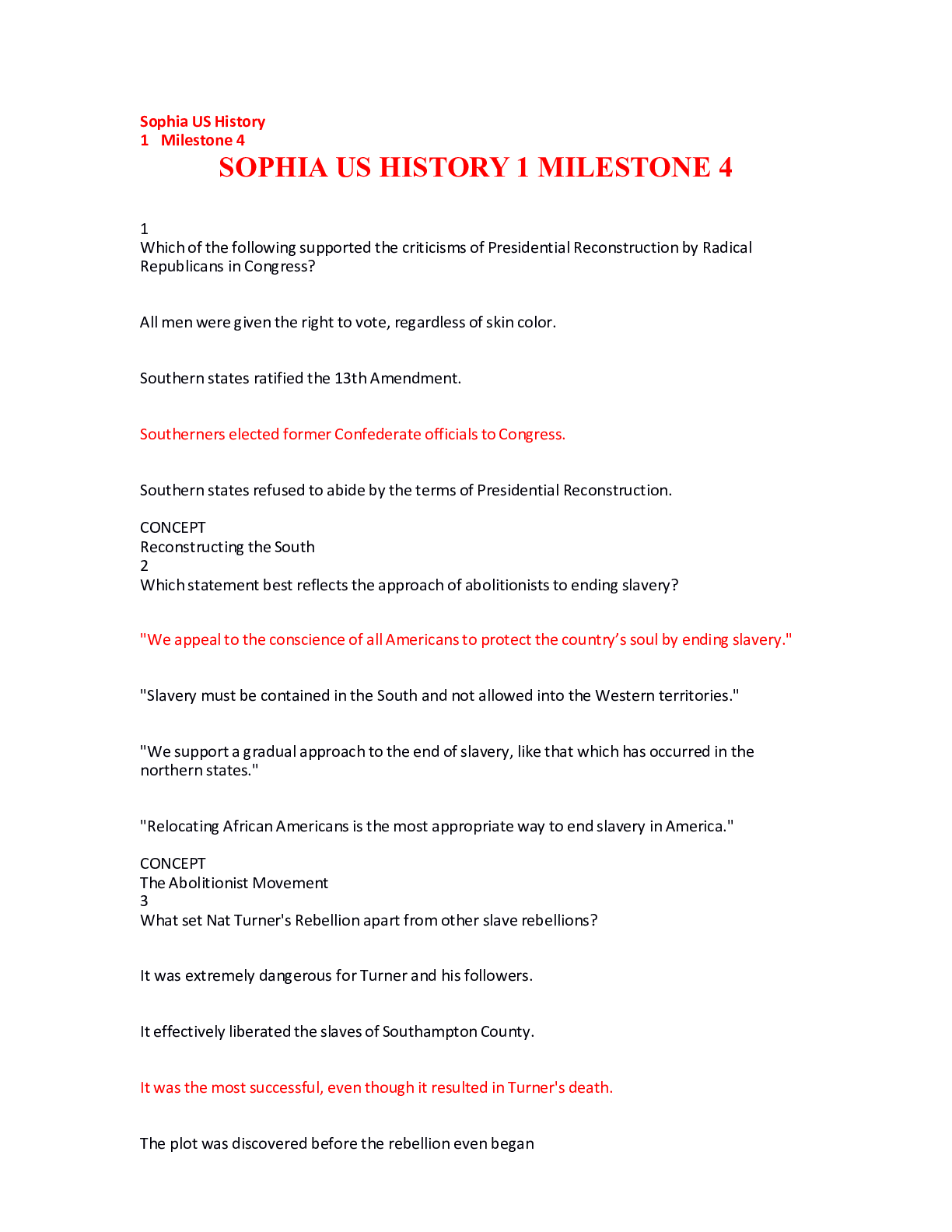
.png)
